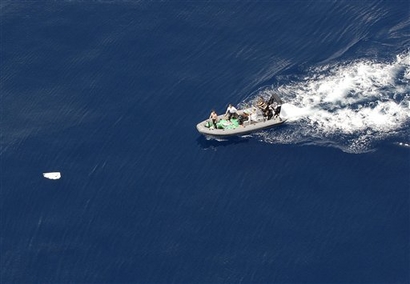
There have been no visible signs of burning or charring on bodies or wreckage, though that doesn't rule out an explosion somewhere outside the passenger cabin, these crash experts told The Associated Press.
A spokesman for Brazilian medical examiners told the AP that the fractures were found in autopsies on an undisclosed number of the 50 bodies recovered so far. The official spoke on condition he not be named due to department rules.
"Typically, if you see intact bodies and multiple fractures - arm, leg, hip fractures - it's a good indicator of a midflight break up," said Frank Ciacco, a former forensic expert at the U.S. National Transportation Safety Board. "Especially if you're seeing large pieces of aircraft as well."
The pattern of fractures was first reported Wednesday by Brazil's O Estado de S. Paulo newspaper, which cited unamed investigators. The paper also reported that some victims were found with little or no clothing, and had no signs of burns.
That lack of clothing could be significant, said Jack Casey, an aviation safety consultant in Washington, D.C., who is a former accident investigator. "In an in-air break up like we are supposing here, the clothes are just torn away."
Casey also said multiple fractures are consistent with a midair breakup of the plane, which was cruising at about 34,500 feet (10,500 meters) when it went down.
"Getting ejected into that kind of windstream is like hitting a brick wall - even if they stay in their seats, it is a crushing effect," Casey said. "Most of them were long dead before they hit the water would be my guess."
When a jet crashes into water mostly intact - such as the Egypt Air plane that hit the Atlantic Ocean after taking off from New York in 1999 - debris and bodies are generally broken into small pieces, Ciacco said. "When you've had impact in the water, there is a lot more fragmentation of the bodies. They hit the water with a higher force."
Lack of burn evidence would not necessarily rule out an explosion, said John Goglia, a former member of the U.S. National Transportation Safety Board.
If something caused the lower fuselage to burn or explode, "passengers would not be exposed to any blast damage" and the plane would still disintegrate in flight," Goglia said. "These are scenarios that cannot be ruled out."
In Paris, Paul-Louis Arslanian, head of the French air accident investigation agency BEA, said search teams had recovered more than 400 pieces of debris - reason for "a little more optimism," since it has helped narrow the search for the black boxes in a vast area of the mid-Atlantic.
"We are in a situation that is a bit more favorable than the first days," Arslanian told a news conference at BEA headquarters outside Paris. "We can say there is a little less uncertainty, so there is a little more optimism."
"(But) it is premature for the time being to say what happened," he added.
Searchers from Brazil, France, the United States and other countries are methodically scanning the surface and depths of the Atlantic for signs of the Airbus A330 that crashed May 31 after running into thunderstorms en route from Rio de Janeiro to Paris. All 228 people aboard were killed.
Still missing are the plane's flight data and voice recorders, thought to be deep under water.
French-chartered ships are trolling a search area with a radius of 50 miles (80 kilometers), pulling U.S. Navy underwater listening devices attached to 19,700 feet (6,000 meters) of cable. The black boxes send out an electronic tapping sound that can be heard up to 1.25 miles (2 kilometers) away, but these locator beacons will begin to fade after just two more weeks.
"It is one of the worst situations ever known in an accident investigation," Arslanian said.
Without the black boxes to help explain what went wrong, the investigation has focused on a flurry of automated messages sent by the plane minutes before it lost contact; one suggests external speed sensors had iced over, destabilizing the plane's control systems.
Arslanian said most of the messages appear to be "linked to this loss of validity of speed information." He said when the speed information became "incoherent" it affected other systems on the plane that relied on that speed data. But he stressed that not all the automated messages were related to the speed sensors.
The automated messages were not alarm calls and no distress call was picked up from the plane, he said.
Air France has replaced the sensors, called Pitot tubes, on all its A330 and A340 aircraft, under pressure from pilots who feared a link to the accident.
Arslanian said a French doctor from the BEA was not allowed to participate in autopsies done so far on some Flight 447 bodies by Brazilian authorities, and those autopsy results have not been released to the BEA. He said he was "not happy" with this situation.
However, he added that French judicial authorities, who are conducting a parallel criminal probe, were present at the autopsies.
Brazil's Federal Police and state medical authorities in Recife who are overseeing the autopsies said in a statement that two French investigators, a dental expert and a doctor, had been following the examinations as observers since June 10.
The French are leading the crash investigation, while the Brazilians are leading the rescue operation.



Comment: The above evidence strengthen the hypothesis that a Tunguska Type Event brought down Air France 447 flight.